According to Nokia, the new Lumia 925 is its "third flagship" phone at the moment. It hasn’t retired the other two Lumias (the 920 and the 928) which continue to sail proudly alongside the 925, with all their flags fluttering.
However there are times when one must wave a pedantic arm from the back of the class where the naughty boys sit, and utter the two words all teachers dread: “But s-s-s-sir…”
My knowledge of all things nautical is based upon the profound observation, taught to me while being dandled on my father’s knee, that “at sea, things happen slowly”. Watching ships crawl along the North Sea coast confirmed the fundamental truth of this – and there wasn't much more you really needed to know. It has also proved true in the reporting of Microsoft’s progress with Windows Phone, where things happen slowly, too.
Now to the multiple flagships. In my dictionary a fleet has just one "flagship" at any one time, the ship that carries the fleet’s admiral or commander. Since the Editor of this esteemed organ is a former naval officer who commanded his own Royal Navy vessel, some things cannot pass unnoticed.
Nokia’s explanation is that all three, um, "flagships" sit at the top of the range, and each has its own USP. And in any case, one of them is only available via one carrier in just one country, limiting its availability. What’s not in doubt is that the new Lumia 925 is the lightest and most svelte of the three by some distance. It’s the swankiest ship with the swankiest flags – and possibly the most attractive Windows phone anyone has made to date.

Nokia has won plenty of plaudits for its newer low-cost Lumias this year, and deservedly so. The 520 and 620 are available on either side of £100 contract-free, and that kind of money barely buys you a three-year-old iPhone. Yet they offer a slick and reliable experience superior to anything in the price bracket. The 620 even pulled off something pretty unusual in a cheap phone – a handset with character and charm.
Crouching wowser, hidden chargin'
But the fortunes of Nokia’s high-end devices have been rather different. Nokia must show something more than "good value" for its years of multibillion-euro expenditure on R&D boffinry; it needs to include a bit of "Wow". This it delivered with last year’s Lumia 920, a phone boasting eye-catching low light photography, rock-steady video recording and stunning live audio capture.
The 920 also boasted Qi wireless charging and Nokia rolled out a range of nice wireless charging accessories. But all this Wow came at a cost: the sturdily built behemoth tipped the scales at 185g encasing a 4.5-inch display… and 90° corners.
And while some cherished the dense, rugged mass for its resilience but for many consumers and carriers it was too much. In addition, Nokia opted to give carrier exclusivity to EE in the UK for its first few months, limiting the appeal to enthusiasts. EE could only offer 4G LTE in a few locations and its tariffs until recently, were punitive.
The Lumia 925 attempts to cram the "Wow" into a much slimmer, lighter and more modern-looking package – the 920 has gone on a crash weight-loss programme.
Design and construction
Flagship number 3 borrows the guts of the 920, offers a tweaked camera and stunning OLED display of the same size. The new phone is around the same weight of the Galaxy S3 and S4, something the market is evidently comfortable with. At 139g, it’s 46g lighter – and believe me, you appreciate every gramme.
The 925 also breaks with recent Nokia industrial design practice of using dyed polycarbonate shells in a range of strong, eye-catching, sorbet colours. This has undoubtedly been good for differentiating Nokia from its rivals – you can spot a Lumia at the other end of the bus.
But not everybody wants to make a statement and many professional and business users are looking for something, well … business-like and professional, possibly. Just as you don’t see too many fluorescent Minis in the executive car park, it isn’t surprising DayGlo Lumias haven’t caught on with professionals, either.
The 925 certainly makes amends. It uses an aluminium frame and harks back to the Nokia designs of 2010 – the late OPK*-era, or the “Years of Madness” as it’s called round here. Premium phones such as the N8, E7, C7 and the C6-01 made classy use of sleek anodised aluminium bodies and while they may have been panned for their Symbian software, they looked handsome, felt like Volvos, and picked up design awards.
The Lumia 925 uses a polycarbonate shell back cover to keep the weight down, and it’s a much more business-like and subdued design that still manages to feel expensive. It certainly sends the message "professional", rather than "urban attention seeker". For my money, this year’s most stylish phone is the HTC One, but Nokia deserves praise for dispensing with design dogma, and turning out something so elegant.
I should advise, and it’s a matter of some urgency if you’re in the market for one of these devices, then get your protection in first. The screen picks up scratches alarmingly easily, even though it's nominally using the scratch-resistant Gorilla Glass. Nokia is using a thinner (2.5D vs 2.25D) glass than on the 925 but that shouldn’t affect its resistance to surface scratches. Other reviewers have also picked up on this. Perhaps the Gorillas were out for the afternoon when this batch rolled out?
Good casing is also essential.
What do you get?
The 925 packs in the much-praised camera unit of the Lumia 920, with an additional lens for daylight photos. Like the 920 it also has a sealed battery and no SD card slot. The latter is one of the few negative points to consider, as the European exclusive for the 32GB model has been given to Vodafone and so all other carriers must settle for the 16GB model. 32GB is available SIM-free, but at a price. “I’d like to have it but the compromise wasn’t worth it,” Nokia’s Kevin Shields told us in aninterview explaining the design decisions.
Space matters here rather more than on a premium phone from last year: it’s a phone many will want to buy for its superb video recording, which at 1080p HD quality, but this will fill the phone quickly. With Windows Phone 8GB gobbling up 2.5GB out of the box, you may have to be more careful than you would otherwise be with a 32GB model. The processor, memory and battery capacity are all the same as the 920, which means there should be some juice left at the end of the day.
The 925 loses wireless charging, which is a shame. It feels like a Roman indulgence to splurge on a couple of Qi charging pads, but once you have a few around the place, trust me, you’ll never look back. It changes the experience of owning a phone in quite a subtle way. With one in the car and one on your office desk, for example, the phone is almost always topped up. Wireless charging can be added via a £20-£24 clip-on plate, but this rather spoils the clean lines, adding 22g to the weight and 4mm to the depth of the phone. Take advantage of price cuts and retail bundle offers – Three and Carphone Warehouse are throwing in a free charging stand and a clip-on cover with Lumia 925 pre-orders – and you only really need two. With the Nexus 7 and Galaxy S4 also adopting wireless, it’s a reasonable investment. Alas Nokia appears to have hit pause on wireless charging as it tries to slim down the phones. Only the Verizon-exclusive 928 this year has Qi built in.
Nokia chose to use an AMOLED display here, rather than the in-plane switching LCD of the 920. Personally, I’m a huge fan of these displays, which have an eerie sci-fi quality for me: the blacks are so black they seem to absorb the surrounding light - it’s like carrying a tiny black hole with you.
OLED screens also complement Windows Phone quite naturally, throwing the text into clear relief, and allowing more colours of the limited palette to be used as the accent highlight colour – I find the Cobalt, for example, is too dim to be the accent colour on an IPS LCD but pops out of an AMOLED screen. The drawback of OLEDs was poor outdoor visibility, but this is bright and perfectly legible outdoors, the screen is specified to 600 nits and I had no problems, the brightness control is now very smooth.
I wouldn’t be too distressed if I never used an other IPS display again, but your mileage may vary.
Performance was superb, and there’s no indication that the chipset inside was mature even last year. The only lags evident were with Nokia’s Smart Camera app, which is doing a lot of work (more below), and which is not mandatory. Windows Phone 8 is far more efficient than Java-based power-guzzlers of Android, the experience is smoother and much less cluttered. Call quality was excellent, and the use of the aluminium frame as an antenna didn’t result in any iPhone 4 style death grips.
What's new in the Windows GDR2 'Amber' bundle?
The 925 also sees the debut of the latest minor revision to Windows 8 Phone: GDR, which with some new Nokia enhancements gets the marketing-friendly moniker of the ‘Amber Update’. All WP8-based Lumias will receive this in the next few weeks.Microsoft additions include a data counter (allowing you to monitor and cap mobile network data usage) called Data Sense and a Wi-Fi hotspot finder. CalDAV and CardDAV have been added, which is fairly vital to accessing your Google contacts and calendar. And FM radio support has been restored – it went AWOL in Windows Phone 8. All Nokia’s WP8 devices bar the 520 have an FM radio, and now you can use it. GDR2 also includes a Wi-Fi hotspot finder, although as you can see from the screen grab, a little more on screen information would be handy.
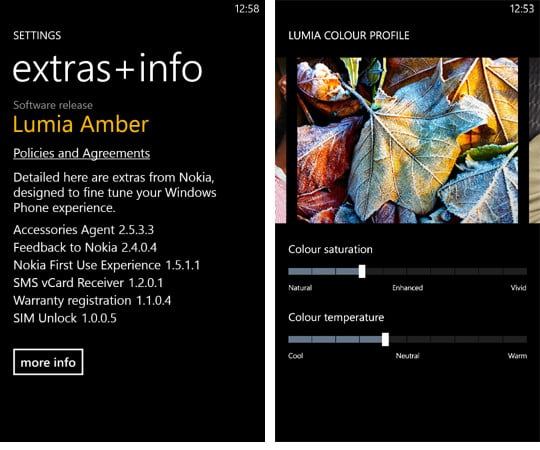
Nokia's Amber update rolls up the Windows Phone 8 GDR2 update with Nokia's own additions, such as Colour Profiles (right).
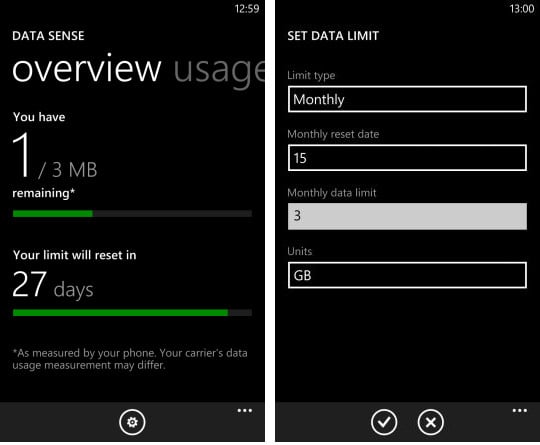
GDR2 includes a data counter and data-capper.
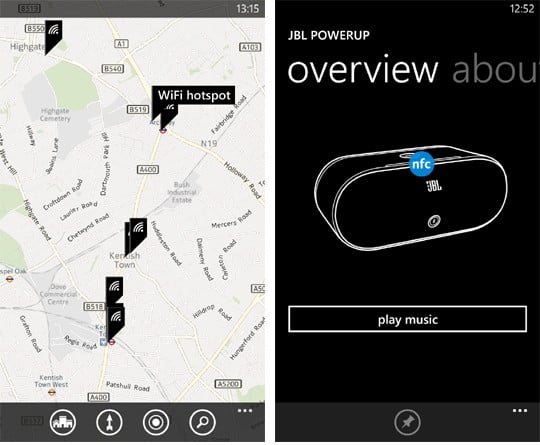
Left: the Wi-Fi hotspot finder, right: Nokia's continues to improve its Accessories support
This is all a bit of a comedown after using the Symbian 808 PureView, which has a wonderful standby screen, offering a shimmering display of very slowly, subtly changing backgrounds which are actually quite informative – you’d know if you’d missed a call or received a text. Nokia also adds colour profiles into its Amber update.
Nokia continues to throw in its own suite of ever-improving apps, including the exclusive streaming music service Nokia Music, and less-exclusive HERE+ Maps and HERE+ Drive, which offers turn-by-turn navigation. The latter two are available to all Windows Phone licensees. Maps is excellent, lacking only the StreetView integration of Google Maps and until now, a compass in the main map app. The iPhone has had compass-orientation in its Maps since 2009. Nokia’s rather gimmicky City Lens augmented reality overlay is now folded into the main Maps app. More usefully the excellent "Transit" or "Transport" app – a best-in-class public transport app – is not bundled, but is available as a free download.
Apple paid Windows Phone a backhanded compliment last week by remodelling iOS7 on the Modern UI: text labels replace buttons across the user interface. However, while iOS looks like Windows Phone, it doesn’t really work much like it. The WP UI may look like it was designed by a self-indulgent graphic designer, its real strengths are very practical: in the interaction design, making the phone simple and consistent to use, which is all built on a rock solid foundation ensuring good battery life and reliability.
There are disadvantages to entering the game late, though. The Windows Phone application store reflects a market almost entirely split between iPhone and Android.
Things are improving, steadily but slowly.
Not everyone is looking for that Long Tail, merely a modern reliable phone that’s easy to use, doesn’t require constant monitoring or maintenance, excels at one or two features such as photography and maps, has a smattering of the essentials. The 925 fits that bill.
The phone that goes Roamin' in the Gloamin'
The 925’s imaging system hardware uses extra hardware, commonly found in dedicated shooters and cams, to steady the shot. The camera module floats on springs, while sensors and gyroscopes compensate for wobble before the picture has been captured, or while video is being recorded. Most rivals can only apply smoothing after the picture has been taken, which the 925 does too. In practice this means better results in low-light conditions, and videos are much smoother.The system has been tweaked a little in the 925, with the addition of an extra lens to the 920, that Nokia says improves daytime photos. As with its fellow flagships, low light photography is quite miraculous – provided you have a steady hand. It’s quite eerie to peer into the "viewfinder" (the display) when you’re taking a photo and see only darkness, then take a picture that’s filled with light and detail. Daylight photos are very good, but less spectacular.
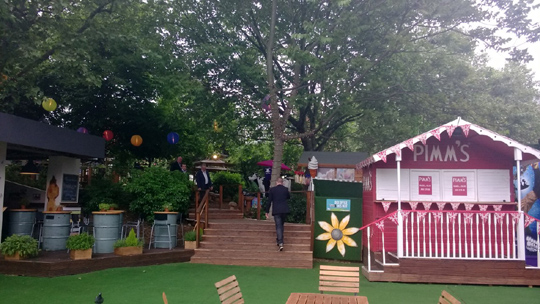
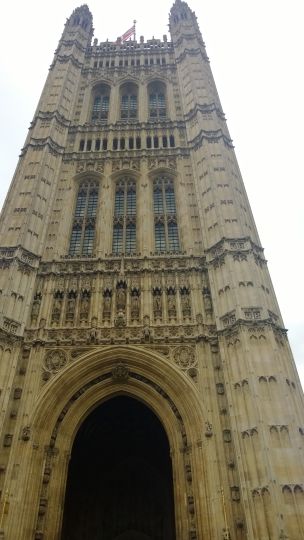
Bootleggers' paradise
The phone also contains another gem from Nokia’s boffins: professional quality audio recording at extremely high volumes. I’ve captured footage with the 920 from right in front of the PA at a decent-sized indoor venue (standing capacity over 3,000) and it plays back in rich stereo with no distortion. How do they do that? Nokia developed the HAAC (High Amplitude Audio Capture) system over several years in partnership with microphone manufacturers, and it made its debut in the 808 PureView last year. Naturally it’s a boon for bootleggers, but for the rest of us it just means more professional everyday video without the confusion caused by Wow and Flutter - the top end of the range is 140dB).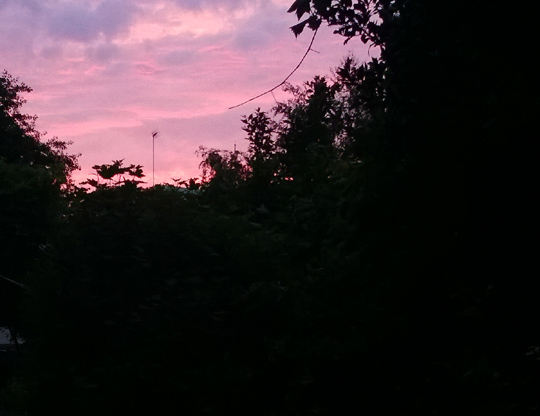
[ Click to enlarge ]
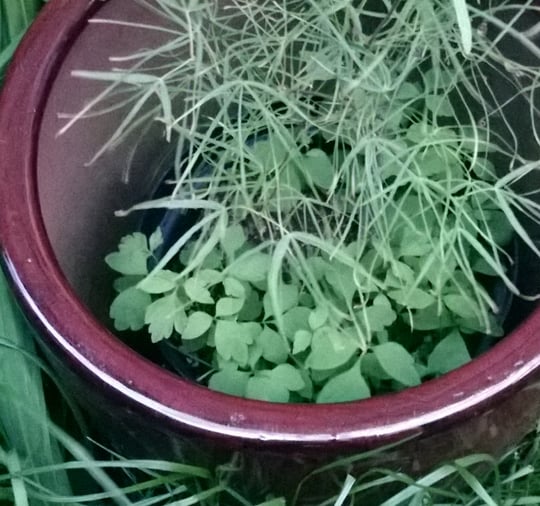
Taken at the same times as the photo above it, the Lumia 925 captures detail very well in poor light

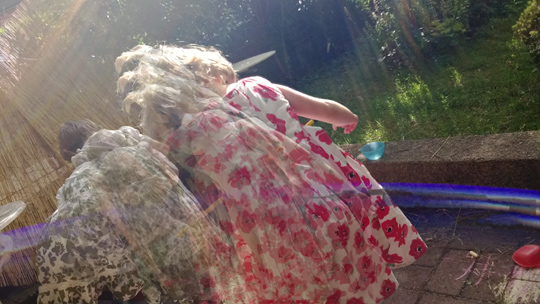

Full marks to Nokia for showcasing its technology so imaginatively, but Smart Camera feels like a kind of stop-gap until these features are built into the default applications. Which is a bit of a shame, as I know how useful the group shot feature can be; kids are almost impossible to snap well, and Grandma likes a nice picture.
Last year Nokia released a unique phone with a 41 Megapixel sensor, the PureView 808, capable of stunning results. The launch of the first Windows-based Lumia incorporating the technology is apparently imminent. So you may be wondering how the Lumia 925 stands up to the 808 PureView. Well, I'm glad you asked.
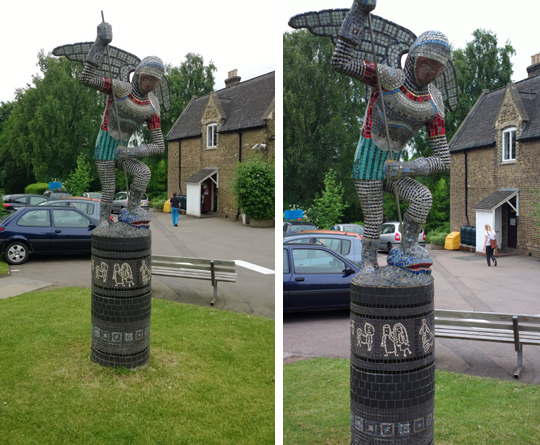
Photo taken from the same spot; Left: Lumia 925, Right: PureView 808
The Lumia is an excellent camera phone. But if Nokia has succeeded in incorporating something like the 808 sensor into its Lumia line, then buyers are in for a treat.
The Reg Verdict
The Lumia packs great photography and video capture into a top notch all-rounder. The usual caveats apply: if you want complete breadth of app coverage, and this is paramount, buy an iPhone 5. If you want the best imaging, Samsung’s Galaxy Zoom offers a pocket camera with an Android phone bolted on the top, but it’s a cumbersome affair. Or you may wish to wait for Nokia’s own gazillion-pixel Lumia, which we expect to be announced in three weeks. This brings the incredible 41Mp PureView 808 camera to Windows, and in a much slimmer package, if "leaks" are to be believed. If you’ve simply wanted an excellent Nokia but been deterred by the bulk and weight of the predecessors and the child-friendly plastics, it’s delivered.Not your average iPhone
Last spring, Nokia launched the Lumia 900 “flagship” into the US that was superseded within a few months by Windows Phone 8 devices, and the concessionary 7.8 upgrade for Lumia 900 owners was months late and offered only resizable tiles. Some kind of assurance for 925 purchasers should be made.
Nokia now looks like a hare in a hurry that has decided to take a ride on a very slow-moving traction engine. It opted for Windows Phone 30 months ago because of the ecosystem support ('markets' in plain English) but the app market for Microsoft lags behind and is only getting there very slowly.
Microsoft effectively spent 2012 porting the feature set of the 2011 Mango update (7.5) to an entirely new OS, and it did it so smoothly that nobody noticed much disruption. Now Microsoft needs to do the “easy part”: address user-land issues like notifications and make dozens of minor tweaks that make a big difference in everyday life. It’s a hell of a lot easier to add a Week View to the Calendar app, or add email message Flags, than it is port an OS to a new kernel.
Nokia’s answer to the Three Flagship Puzzle is that “it’s a different expression of what we delivered in the 920” – a reasonable description of bringing last year’s advanced technology to something most people can live with comfortably. It’s a whole lot more sleek and stylish than anything Nokia has produced since switching to Windows Phone, and classier than its plasticky-feeling rivals too.
Kudos to Sony and HTC too for trying to raise the standards of industrial design this year. It demonstrates Nokia is on top of its game, and able to deliver quality as well as good value at the bottom of the market. ®
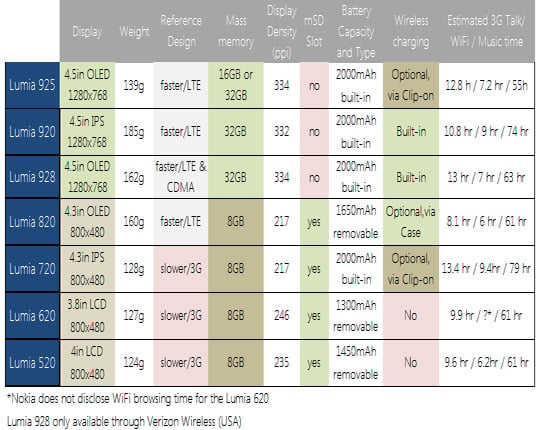
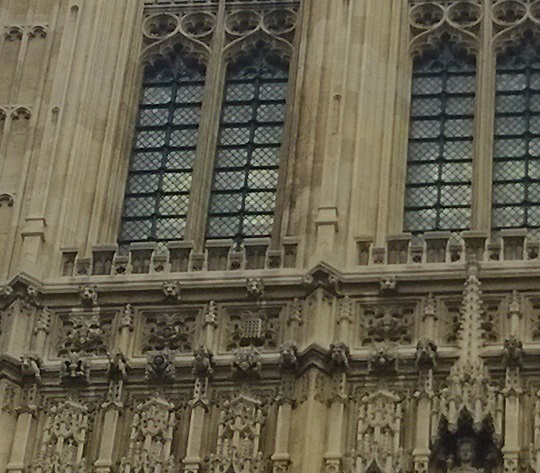
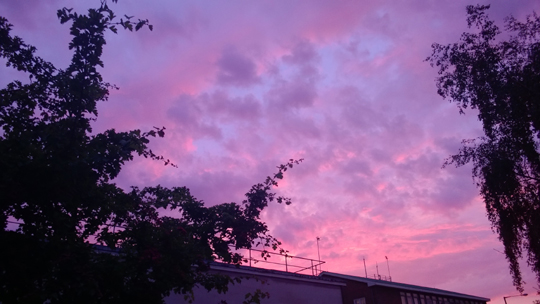

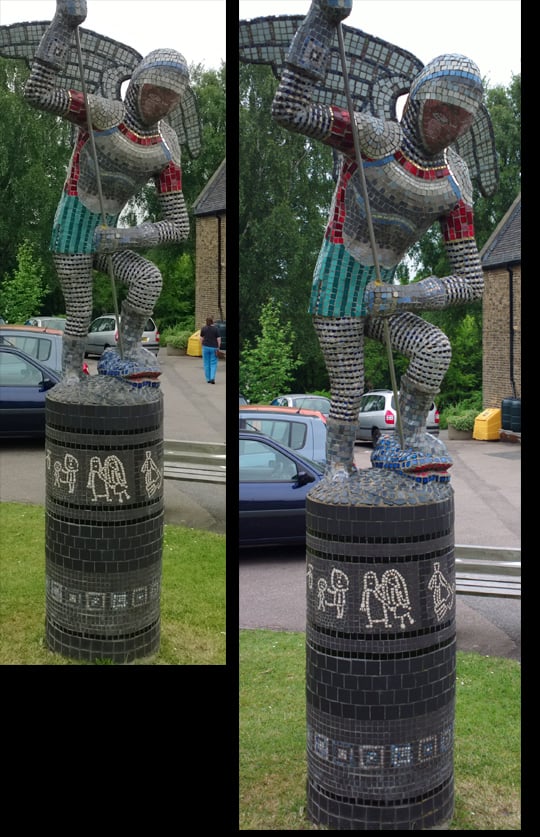
No comments:
Post a Comment